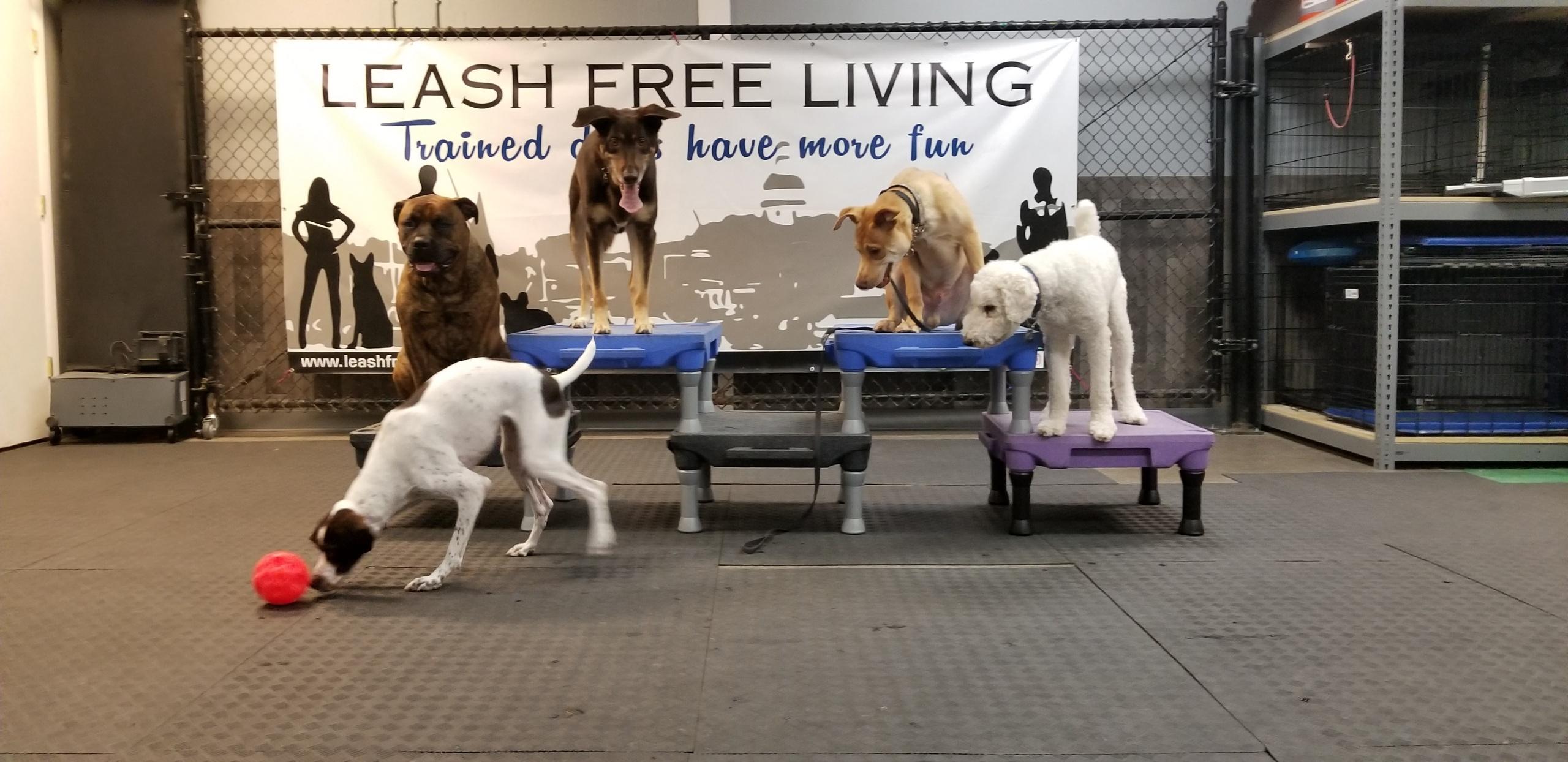We are so luck that every day, we are able to fill our training studio full of dogs for our Day Training Program. The dogs are of various ages, size, temperaments and training levels. Once everyone is in, we give them a mentally and physically enriching day. Every day. Our training based day care service is so unlike what is typically offered, that even playtime is a little different here.
Part of every day includes a Structured Play time. This is the time that the dogs are mostly loose and free to play and interact as they choose, but we interrupt them often with basic obedience commands. This serves several purposes. It helps us reinforce appropriate play rules, it keeps the play from becoming too rowdy, and it gives t he dogs an opportunity to practice their skills with a very strong distraction – their peers.
he dogs an opportunity to practice their skills with a very strong distraction – their peers.
We need structured play to keep day care running smoothly, and to keep all the dogs fresh polished on their basic obedience. If they can succeed during our Structured Play times, they are easier to control during drop off and pick up times, when other dogs are in training sessions, and for our famous group photos.
We focus on two skills during structured play – random recalls and random sits. Come when we call you, even if you are playing. Sit when we ask even if you are playing. One of the advantages of practicing in this setting is that the dogs don’t loose access to their friends when they come or sit. They can come, be rewarded for coming, and then go right back to playing. Two rewards for the price of one!
This is a long video, so feel free to skip around or only watch part of it.
What are the play rules?
1) Both dogs should seem like they are enjoying themselves. If one of the dogs become overwhelmed, or annoyed, it is time to break it up. 2) Only two dogs can be playing with each other at the same time. Groups of three or more are a recipe for disaster, so we will call the third wheel away when that happens. 3) Limited amounts of barking. No fancy reason for this – its just annoying. We will interrupt them with that happens as well. 4) No humping. It is a relatively normal play behavior, but most dogs don’t like to be humped and we don’t like to see it. 5) Limited levels of excitement. Sometimes perfectly normal play can escalate to an inappropriate level. We will step in then too.
What if the dogs don’t come?
New dogs would practice this on a leash before being loose in the pack. If I’m not confident a dog will respond to the come command, I’m not going to call them. Notice that the two littlest puppies were only asked to sit during this Structured Play Session. Even with the sit command, I made it hard for them to fail but getting close and having my reward ready. Once I know they can reliably interrupt play to follow a command, and can reliable come when called on a leash, then they can practice recalls in this setting. If dogs don’t come at all, we would put them on a leash for a little review session.
Is all play structured?
Nope. Sometimes they have looser play times, where we would only interrupt them with obedience commands to help reinforce the play rules.
What else do they do at Day Training?
 Dogs also take part in group training exercises, take leashed potty walks (during potty walks most dogs are crated to prevent most unsupervised dog play), and usually slow down enough for something of a nap time in the afternoon. Individual training sessions can be added on so that your dog can learn a new skill, or focus on a behavior problem during their day. In the photo to the left, the dogs are taking turns playing with a treat dispensing toy. Enrichment and impulse control!
Dogs also take part in group training exercises, take leashed potty walks (during potty walks most dogs are crated to prevent most unsupervised dog play), and usually slow down enough for something of a nap time in the afternoon. Individual training sessions can be added on so that your dog can learn a new skill, or focus on a behavior problem during their day. In the photo to the left, the dogs are taking turns playing with a treat dispensing toy. Enrichment and impulse control!
Leash Free Living’s Day Training really is the coolest, most interactive day care in town.
If you’re interested in having your dog join the fun, check out our Day Training page, or call to set up an evaluation!

